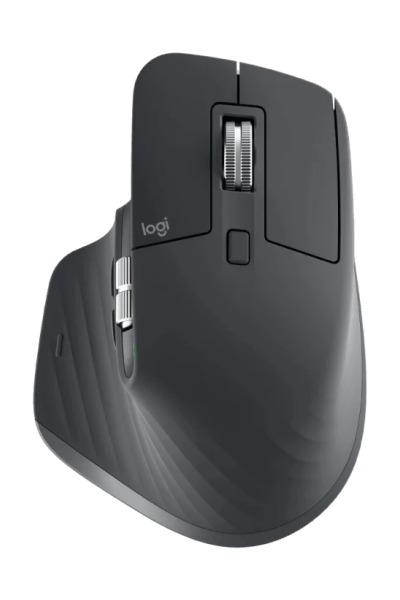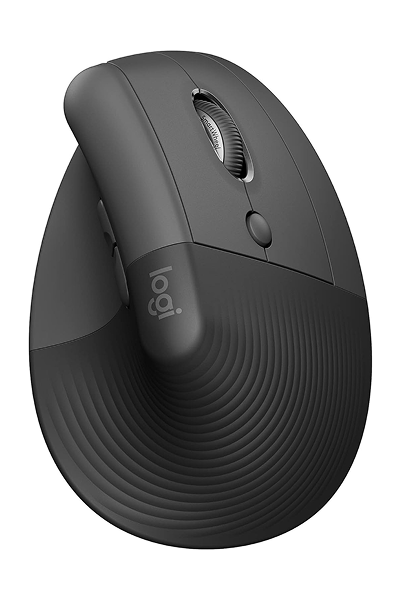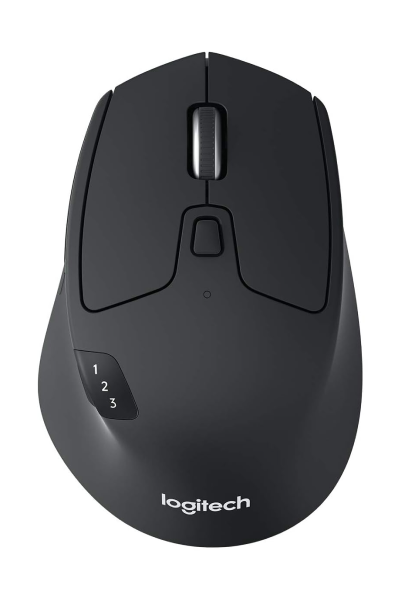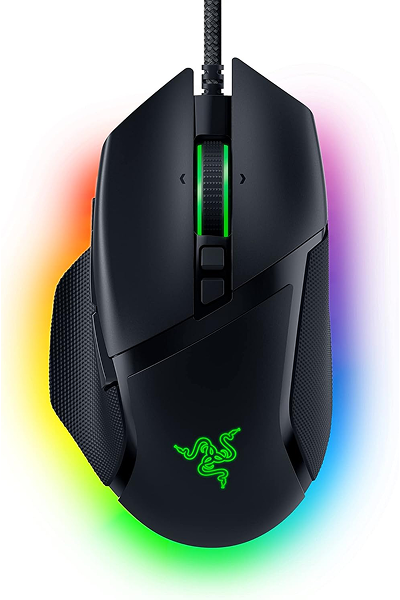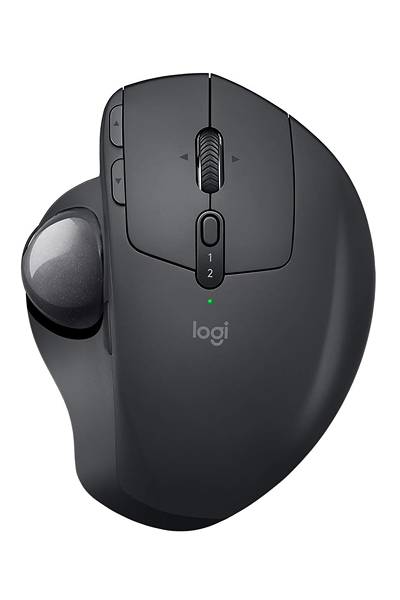Best Ergonomic Mice for Comfort and Productivity (2025)
Ergonomic mice prioritize comfort and productivity without sacrificing features. For example, the Logitech Lift encourages a natural handshake posture (and even offers a left-handed option), while the MX Master 3S includes an ultra-precise 8000 DPI Darkfield sensor for any-surface tracking. In this roundup, we compare five top designs - from vertical grips to sculpted contours and thumb-driven trackballs - examining their sensors, connectivity, and productivity features for 2025.
Logitech MX Master 3S
High-end ergonomic wireless mouse featuring an 8,000 DPI Logitech Darkfield sensor (tracks on glass), nearly silent clicks, and support for multi-device Flow connectivity.
Specifications
- Sensor Logitech's Darkfield Laser
- Weight ~141 g
- DPI 200 - 8,000
- Polling Rate 125 Hz
- Connectivity Wireless (Logi Bolt 2.4GHz & Bluetooth)
- Shape Ergonomic (Right-handed)
Pros
- High-quality build with an ergonomic, comfortable shape
- Supports up to 8,000 DPI and works on most surfaces including glass
- Features quiet mechanical clicks and advanced scroll/wheel controls
Cons
- Polling rate is low (125 Hz), so not optimal for fast-paced gaming
- Relatively heavy and bulky; not easily portable
- Premium price point compared to standard gaming mice
Logitech Lift
The Logitech Lift is a vertical ergonomic wireless mouse. It's available in right- and left-handed versions and features quiet clicks, a rubber thumb rest, and Bluetooth or USB connectivity.
Specifications
- Sensor Logitech Advanced Optical Tracking
- Weight ~125 g
- DPI 400-4000
- Connectivity Wireless
- Shape Ergonomic (vertical handshake)
- Polling Rate 125Hz
Pros
- Natural vertical handshake grip reduces wrist strain
- Available in both left- and right-handed models
- Bluetooth and USB connectivity (pairs with 2 devices)
- Quiet clicks and comfortable rubber thumb rest
- Long AA battery life (~24 months)
Cons
- Lower performance specs (125Hz polling, 4000 DPI)
- Tilt angle is moderate (57° - mild relief)
- Heavier than some compact mice (~125g)
- Requires AA battery (no quick recharge)
Logitech M720 Triathlon
Wireless office mouse built for multitasking - ergonomic right-handed shape with thumb rest, long battery life (~24 months), and Easy-Switch connectivity to 3 devices.
Specifications
- Sensor Logitech Advanced Optical Tracking (LED)
- Weight 134.8 g
- DPI 1000 (fixed)
- Polling Rate 125Hz
- Connectivity Wireless USB and Bluetooth
- Shape Right-handed ergonomic with thumb rest
Pros
- Comfortable ergonomic shape with a contoured thumb rest, well-suited for long use.
- Stable wireless performance and multi-device switching (pair up to 3 devices).
- Long battery life (up to 2 years on one AA battery) and robust build.
- Generous set of buttons (6 programmable) and a scroll wheel with a fast/slow mode.
Cons
- Bulky and heavy - not ideal for travel (about 135g).
- Fixed low DPI (1000) - no sensitivity adjustment.
- Scroll wheel can be overly fast, causing overshoot during precise scrolling.
- Some users report occasional pairing or setup quirks when switching devices.
Razer Basilisk V3
A wired ergonomic right-handed mouse (~100g) with thumb rest and textured grips. It uses Razer's 26K DPI sensor, has 11 programmable buttons, and a 4-way HyperScroll tilt wheel for versatile gameplay (FPS, MOBA, etc.).
Specifications
- Sensor Razer 26K DPI Optical Sensor
- Weight ~99.9g
- DPI 100-26,000
- Polling Rate 1000Hz
- Connectivity Wired (Speedflex Cable)
- Shape Right-handed ergonomic
Pros
- Ergonomic design with sculpted thumb rest for comfort
- HyperScroll tilt wheel (L/R tilt + free-spin mode) adds functionality
- Razer's 26K DPI sensor delivers high precision tracking
- 11 programmable buttons (10 side + hypershift) for customization
- On-board profiles and Chroma RGB for visual flair
Cons
- Relatively heavy (~100g) - not an ultralight mouse
- Only right-hand orientation (not ambidextrous)
- Requires Razer Synapse software (Windows-only) for full customization
- Tilt-wheel free-spin can be too fast for some users
- Sharper angle on right-side button may feel awkward for some grips
Logitech MX ERGO
The Logitech MX ERGO is a unique wireless ergonomic trackball mouse. It uses a thumb-operated ball for cursor control, with an adjustable tilt base (0° or 20°). It offers Bluetooth and USB connectivity and up to 2048 DPI tracking, ideal for long work sessions.
Specifications
- Sensor Logitech Advanced Optical Tracking
- Weight ~259 g (with tilt)
- DPI 512-2048
- Connectivity Wireless
- Shape Ergonomic (trackball design)
- Polling Rate 125Hz
Pros
- Thumb-controlled trackball reduces wrist movement
- Adjustable tilt angle (0° or 20°) for personalized comfort
- Dual connectivity (Bluetooth + USB Unifying) for 2 devices
- Precision sensor (512-2048 DPI) with speed toggle button
- Sturdy build and rechargeable battery (≈4 months per charge)
Cons
- Steep learning curve (trackball control)
- Very heavy (~260g) with tilt base
- Limited speed (2048 DPI, 125Hz polling)
- Only right-handed design (not ambidextrous)
Each mouse balances comfort and function differently. The MX ERGO trackball's unique tilt base (0° or 20°) is “designed to conquer lengthy…spreadsheets” and its buttons plus multi-computer support streamline workflows. The other models (Lift, M720, Basilisk V3, MX Master 3S) mix different grip styles, sensors, and features - covering everything from reducing wrist strain to ultra-fast tracking. Together they offer an ergonomic solution for every user in 2025.
Sources: Official product pages and manufacturer documentation for specifications. pros/cons are based on expert reviews. images are from official manufacturer webites and belong to their respective owners.
Share on